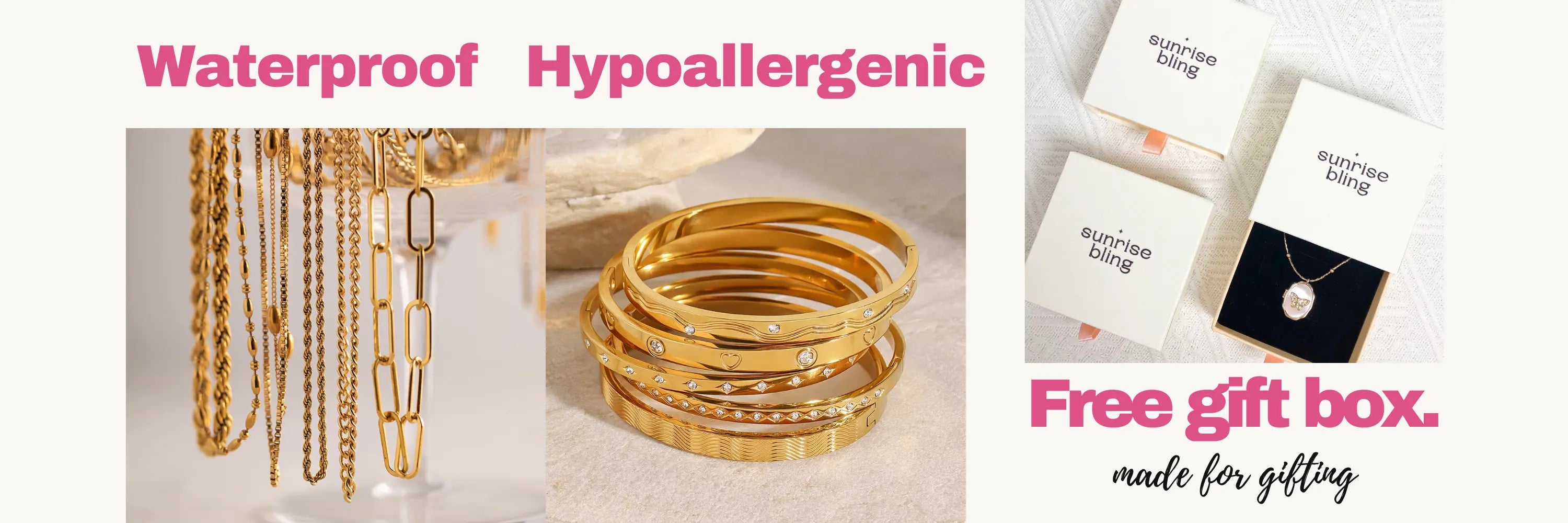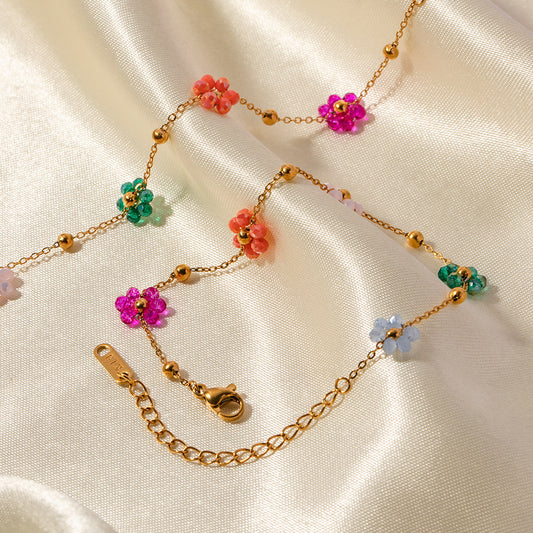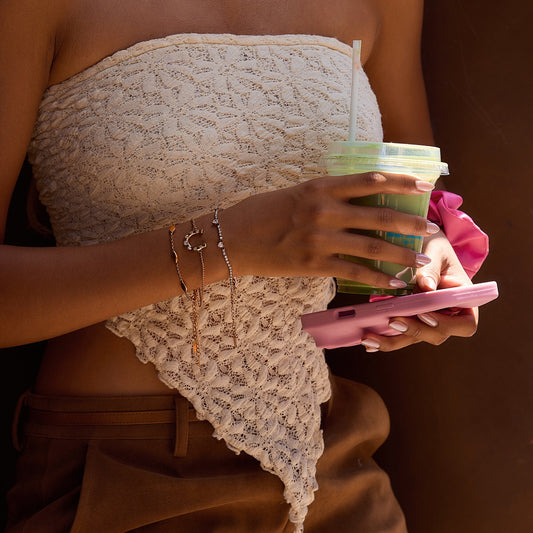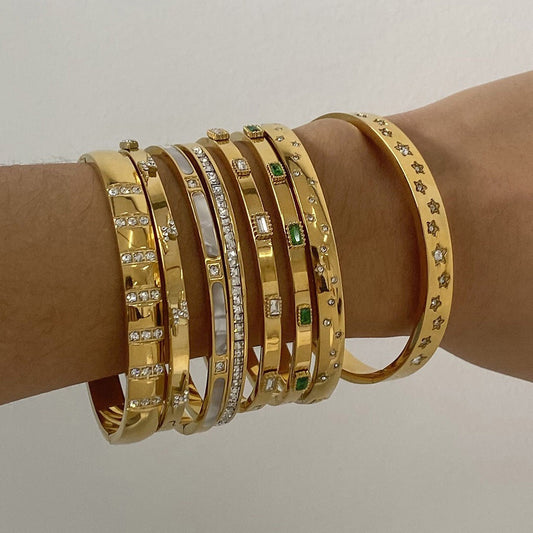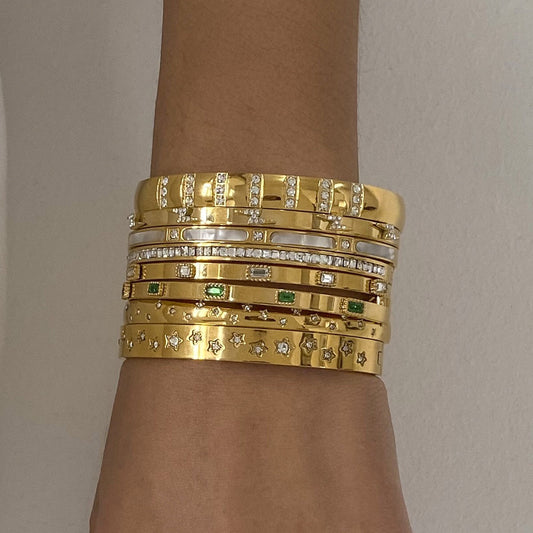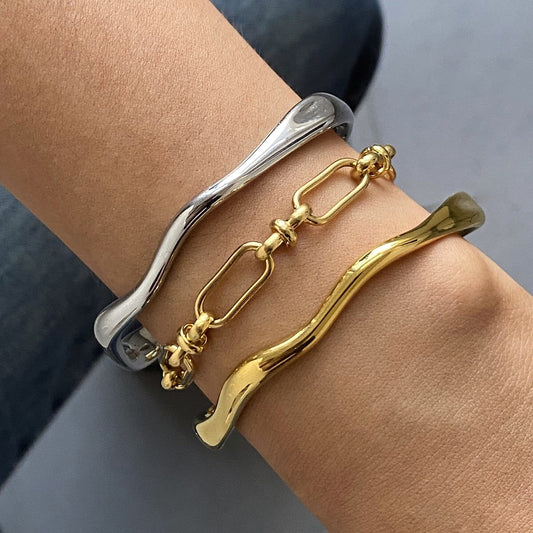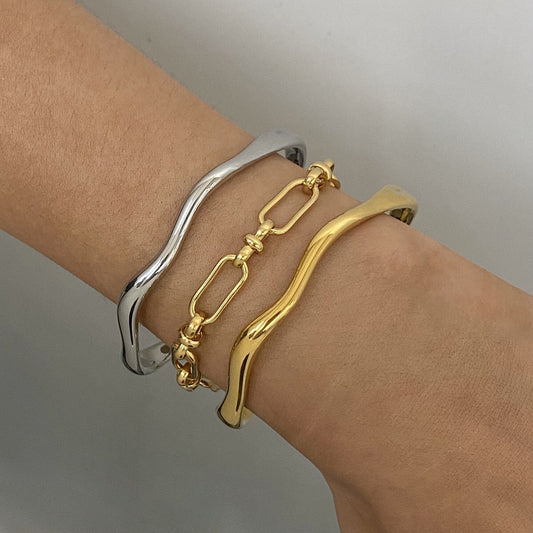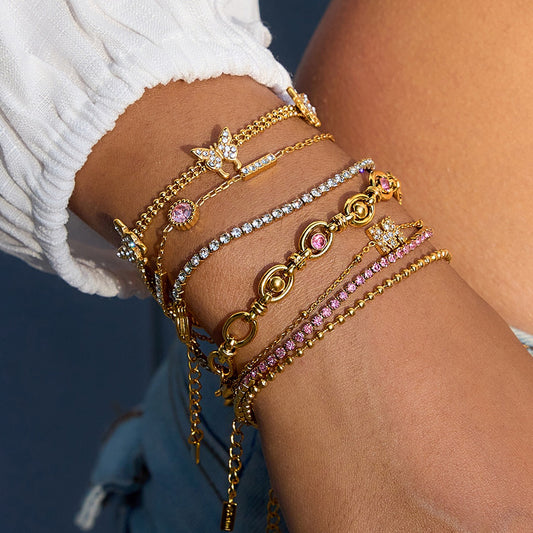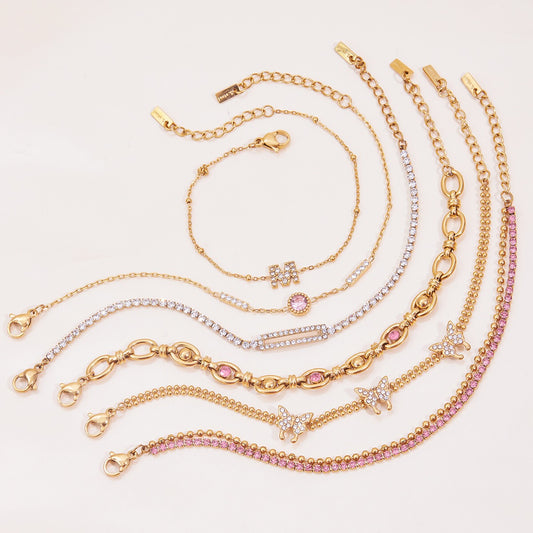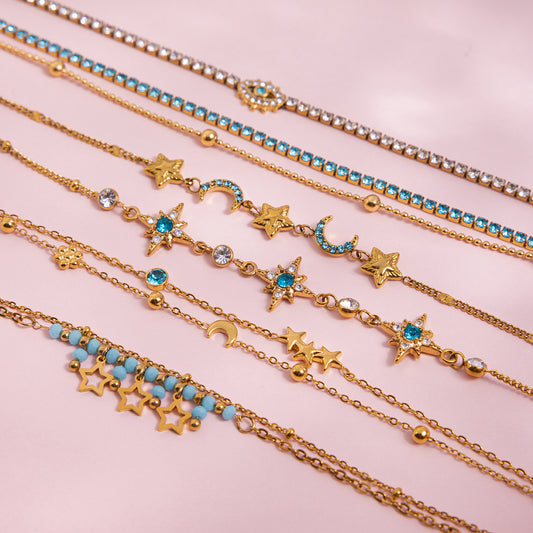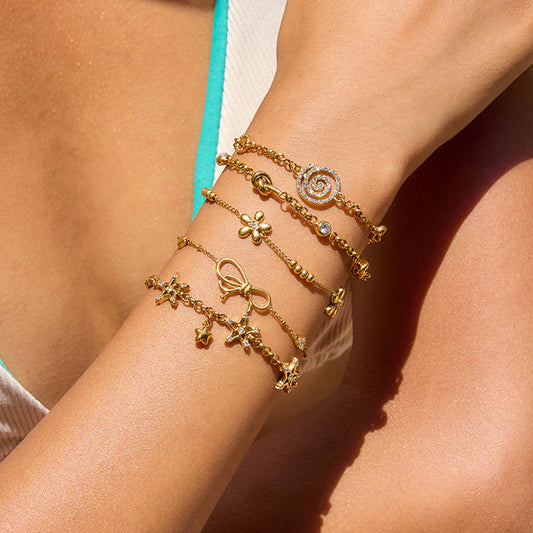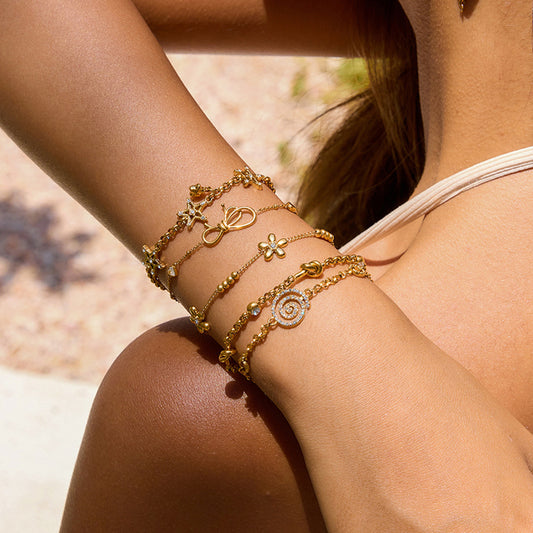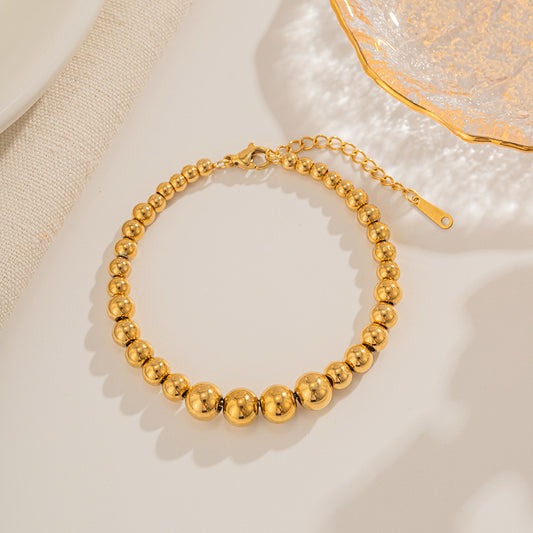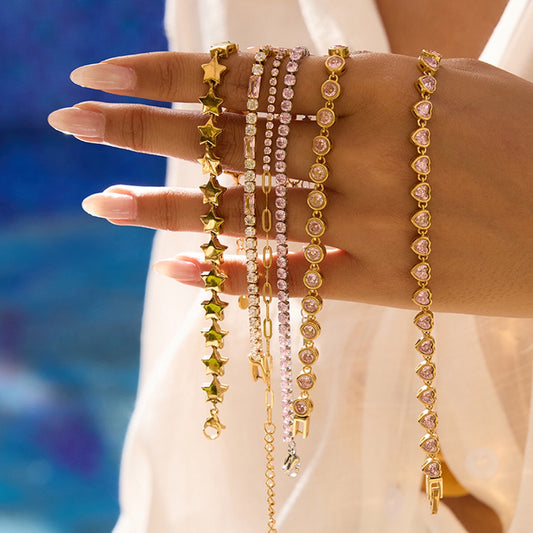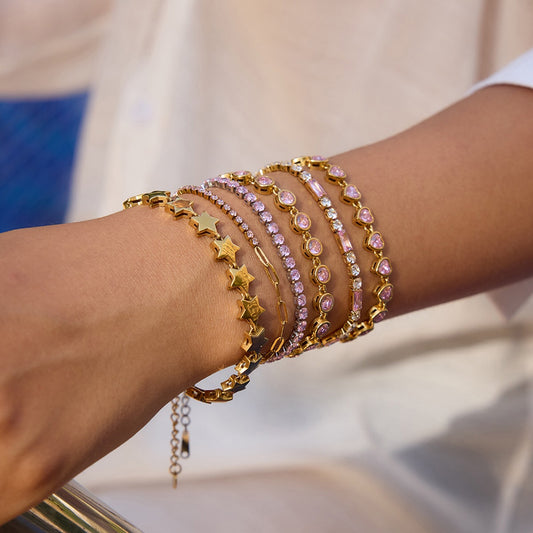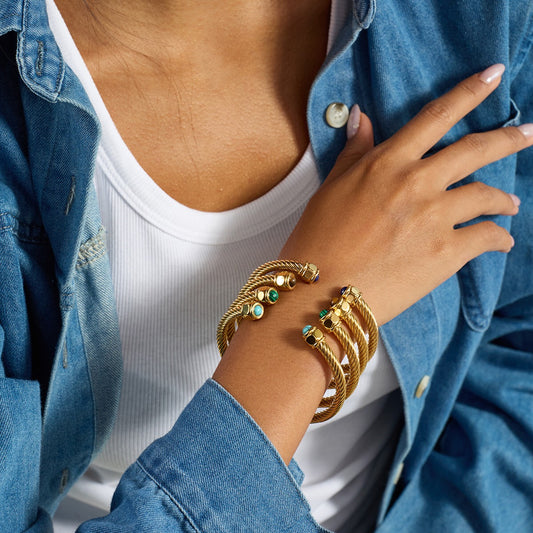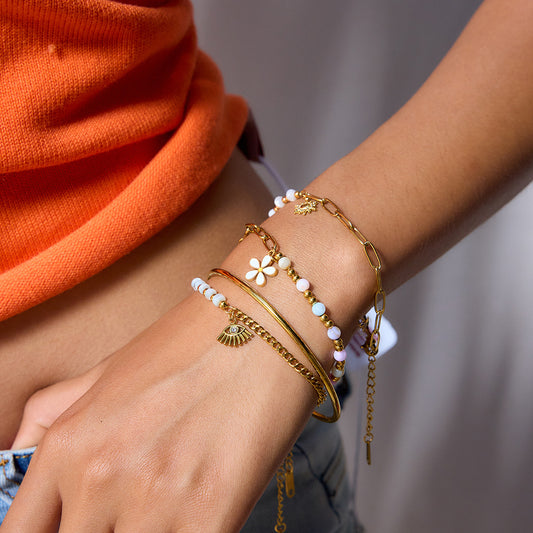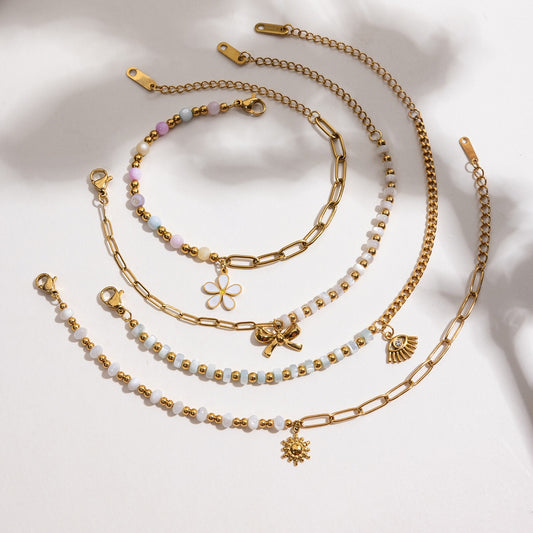Diamond bracelet has evolved from a “special-occasion only” luxury to an everyday accessory that adds subtle glamour to any look. The Diamond Jewelry Market was valued at USD 356.04 Billion in 2024, and is expected to reach USD 478.81 Billion by 2030, rising at a CAGR of 5.22%. Unlike bulky diamond necklaces or oversized earrings, a diamond bracelet offers just the right amount of shine: enough to catch the light during a work meeting or a casual coffee run, but not so much that it feels over-the-top. From classic tennis bracelets to modern stackable designs, this guide covers everything you need to know about diamond bracelets—from what they are to how to spot a real one.
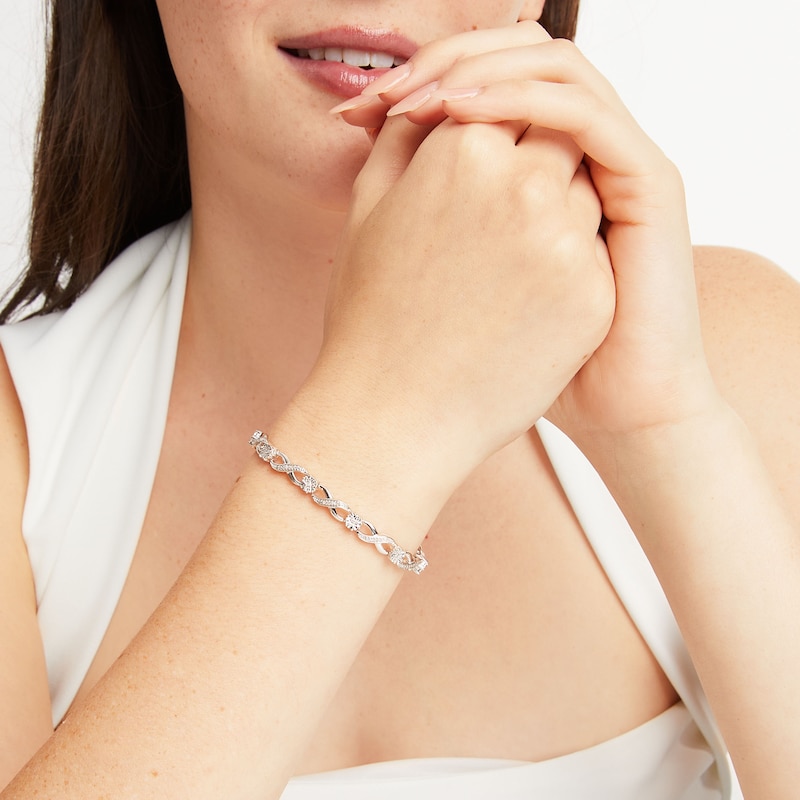
What Is a Diamond Bracelet?
A diamond bracelet is a piece of jewelry featuring diamonds (natural or lab-grown) set into a metal band or chain, designed to be worn around the wrist. Unlike other diamond jewelry (like rings or necklaces), diamond bracelets prioritize wearability—they’re crafted to move with your wrist, resist daily scratches, and complement both casual and formal outfits. The defining feature is the diamonds themselves: they can be small (0.01–0.05 carats per stone) for a subtle glow or larger (0.50+ carats per stone) for a bold statement, depending on the style.

Key Characteristics of Diamond Bracelets
-
Materials: The metal base (called the “setting”) is typically durable and skin-friendly:
-
Sterling Silver: Affordable, hypoallergenic, and ideal for casual diamond bracelets (often paired with small, pavé-set diamonds).
-
White Gold (14k/18k): A popular choice for classic styles (like tennis bracelets)—it complements diamonds’ sparkle and resists tarnish.
-
Yellow Gold (14k/18k): Adds warmth to diamonds, perfect for modern or vintage-inspired designs.
-
Platinum: Luxurious and scratch-resistant, but more expensive—used in high-end diamond bracelets (great for daily wear).
-
Diamond Settings: How diamonds are attached to the bracelet impacts both style and durability:
-
Pavé Setting: Tiny diamonds set close together, creating a “line of sparkle” (common in tennis bracelets and stackable styles).
-
Prong Setting: Individual diamonds held in place by small metal prongs (highlights each diamond’s shape and brilliance, often used for larger stones).
-
Bezel Setting: Diamonds encased in a thin metal rim (most durable—ideal for active lifestyles, as it protects diamonds from chips).
-
Clasp Types: Secure clasps are essential for preventing loss:
-
Lobster Clasp: Easy to open/close and secure (common in casual diamond bracelets).
-
Box Clasp with Safety Chain: A small box-shaped clasp with an extra safety chain (used in tennis bracelets and high-end designs—adds peace of mind).

How Diamond Bracelets Differ from Other Bracelets
-
Sparkle & Value: Unlike gemstone (e.g., sapphire, ruby) or pearl bracelets, diamond bracelets offer a unique “fire” (dispersion of light) that no other gemstone can match. They also hold their value better over time.
-
Versatility: While beaded or leather bracelets are often casual, diamond bracelets transition seamlessly from day (with jeans and a t-shirt) to night (with a cocktail dress).
-
Durability: Diamonds are the hardest natural gemstone (rated 10 on the Mohs scale), so diamond bracelets resist scratches better than bracelets with softer gemstones (e.g., pearls, emeralds).
Why Is a Diamond Bracelet So Popular?
Diamond bracelets have become a staple in modern jewelry boxes because they solve a key desire: adding luxury to everyday life without sacrificing practicality. Their popularity stems from four core reasons: versatility, lasting value, emotional resonance, and accessibility.
Versatility for Every Occasion
A diamond bracelet works in nearly every setting:
-
Casual Days: A thin pavé diamond bracelet pairs with a white t-shirt, jeans, and sneakers—adding a “quiet luxury” vibe without feeling dressy.
-
Work Wear: A classic tennis bracelet complements a blazer and pencil skirt—polished enough for meetings, but not distracting.
-
Formal Events: A diamond bracelet with larger stones (or a design with diamond accents) elevates a gown or cocktail dress—no need for extra jewelry.
Lasting Value (Investment Appeal)
Diamonds hold their value better than most fashion jewelry. A well-cared-for diamond bracelet will retain 50–70% of its original value over 10 years (vs. 10–20% for non-diamond bracelets). This makes it not just an accessory, but a small investment—many people pass down diamond bracelets as heirlooms.
Emotional Resonance (Perfect for Gifting)
Diamonds are tied to meaningful moments: they’re a traditional gift for anniversaries (10th = diamond anniversary), birthdays, or milestones (like a promotion). A diamond bracelet feels personal—it says “I value you” more than a generic gift, and the recipient will think of you every time they wear it.
Accessibility (For Every Budget)
Gone are the days when diamond bracelets were only for the wealthy. Lab-grown diamonds (which are chemically identical to natural diamonds but 30–50% cheaper) and small-pavé designs mean there’s a diamond bracelet for nearly every budget—from \(200 (sterling silver + small lab-grown diamonds) to \)10,000+ (platinum + large natural diamonds).

Popular Styles of Diamond Bracelet
Diamond bracelets come in a range of designs, from classic to trendy, ensuring there’s something for every taste. Below are the most in-demand styles:
Classic Diamond Bracelet Styles (Timeless)
These styles never go out of fashion, making them ideal for everyday wear or gifting:
-
Tennis Bracelet: A thin, flexible bracelet with evenly spaced pavé-set diamonds (usually 0.05–0.10 carats per stone) in a line. It was popularized by tennis star Chris Evert, who wore one during a match in 1987. It’s sleek, versatile, and perfect for both casual and formal looks.
-
Solitaire Diamond Bracelet: A single large diamond (0.50–2.00 carats) set in a simple metal chain. It’s minimalist but eye-catching—great for someone who prefers “less is more” elegance.

Modern Diamond Bracelet Styles
These designs give diamond bracelets a fresh, contemporary twist:
-
Stackable Diamond Bracelet: Thin bracelets (2–3mm wide) with small pavé diamonds, designed to be worn with other stackable bracelets (e.g., a diamond bracelet + a plain gold band). They’re lightweight and customizable—you can mix metals (white gold + rose gold) for a trendy look.
-
Diamond Cuff Bracelet: A rigid, open-ended bracelet with diamonds set along the top. It’s bolder than a tennis bracelet but still wearable—perfect for nights out or special events. Some designs mix diamonds with small gemstones (like sapphires) for color.
-
Diamond Charm Bracelet: A chain bracelet with small diamond-encrusted charms (e.g., a tiny heart, star, or initial). It’s playful and personal—great for gifting, as you can add charms for milestones (e.g., a baby shoe charm for a new mom).
Casual Diamond Bracelet Styles (Everyday Wear)
These styles prioritize comfort and durability for daily use:
-
Diamond Bar Bracelet: A thin chain with a small metal bar (1–2 inches long) set with pavé diamonds. It’s understated and lightweight—you’ll forget you’re wearing it (in the best way).
-
Diamond Link Bracelet: A chain made of small, interlocking links, each set with a tiny diamond. It’s flexible and resistant to tangling—ideal for active lifestyles (e.g., working out, cooking).
How to Wear a Diamond Bracelet
Wearing a diamond bracelet is easy—its flexibility means it works with nearly any outfit. Follow these tips to make the most of its sparkle:
Styling for Casual Looks
-
Keep It Simple: Wear a single thin diamond bracelet (like a pavé or bar style) on your dominant wrist. Pair it with a t-shirt, jeans, and sneakers—let the bracelet be the subtle star.
-
Mix with Casual Bracelets: Layer a diamond bracelet with a leather or beaded bracelet. For example, a white gold diamond pavé bracelet + a brown leather wrap bracelet—this balances sparkle with laid-back style.
-
Avoid Overcrowding: Stick to 2–3 bracelets max on one wrist. Too many bracelets will hide the diamond’s sparkle and feel bulky.
Styling for Work Wear
-
Choose Classic Styles: A tennis bracelet or thin solitaire bracelet works best for the office. It’s polished but not distracting—great for client calls or meetings.
-
Match Metals to Your Watch: If you wear a silver watch, opt for a white gold or sterling silver diamond bracelet. If you wear a gold watch, choose a yellow or rose gold diamond bracelet. This creates a cohesive look.
-
Wear on Your Non-Dominant Wrist: This prevents the bracelet from getting in the way of typing or writing.
Styling for Formal Occasions
-
Go Bold (or Keep It Elegant): For a wedding or gala, wear a diamond cuff bracelet or a tennis bracelet with larger diamonds. Pair it with a strapless or sleeveless dress to show off the wrist.
-
Coordinate with Other Diamond Jewelry: Match your diamond bracelet to diamond stud earrings or a small diamond pendant necklace. This creates a “set” look without being matchy-matchy.
-
Skip Other Wrist Jewelry: Let the diamond bracelet be the focal point. Avoid wearing a watch or other bracelets—too much jewelry will clutter the look.
Diamond Bracelet: Perfect Gift for Your Wife
A diamond bracelet is one of the most thoughtful gifts you can give your wife. It’s elegant, personal, and tied to meaning—making it far more special than a generic gift.
Why It Resonates as a Wife Gift
-
Timelessness: Unlike flowers or perfume (which fade), a diamond bracelet lasts for years. She’ll wear it to anniversaries, family gatherings, and even pass it down to your kids—turning it into a family heirloom.
-
Personalization: You can choose a style that fits her taste: a tennis bracelet if she loves classic elegance, a stackable style if she’s trendy, or a charm bracelet if she loves personal touches.
-
Symbolism: Diamonds represent strength, love, and eternity—perfect for honoring your marriage. Gifting a diamond bracelet says, “Our love is as strong and brilliant as this diamond.”
Top Diamond Bracelet Gifts for Your Wife
-
Classic Tennis Bracelet: A 14k white gold tennis bracelet with 0.50–1.00 carats of pavé-set diamonds. It’s versatile—she’ll wear it every day and for special occasions.
-
Stackable Diamond Set: A set of 2 thin diamond bracelets (one white gold, one rose gold) that she can wear together or separately. It’s customizable—she can add more stackable bands later.
-
Diamond Charm Bracelet: A gold chain bracelet with a few meaningful charms (e.g., a heart charm with your anniversary date, an initial charm for your kids’ names). It’s personal and grows with your family.
Tips for Choosing the Right One
-
Know Her Style: If she wears minimal jewelry, go for a thin pavé or bar bracelet. If she loves bold pieces, opt for a cuff or solitaire bracelet.
-
Consider Her Lifestyle: If she’s active (e.g., exercises often, cooks), choose a bezel-set or link bracelet (more durable). If she works in an office, a tennis bracelet is perfect.
-
Check Her Wrist Size: Most diamond bracelets are 7–7.5 inches long (standard for women). If her wrist is smaller (6–6.5 inches) or larger (8+ inches), look for adjustable styles or have it resized.
How to Clean a Diamond Bracelet
Diamonds are durable, but they need regular cleaning to maintain their sparkle—everyday dirt, lotion, and oil can make them look dull. The good news is cleaning a diamond bracelet is easy to do at home.
Daily Care to Prevent Dullness
-
Wipe After Wear: Use a soft, dry microfiber cloth to wipe the bracelet after each wear. This removes skin oils and lotion that can build up on diamonds and metal.
-
Remove During High-Risk Activities: Take off the bracelet before showering, swimming, cooking (especially with greasy foods), or applying lotion/makeup. Water, chemicals, and oil can dull diamonds and damage metal.
-
Store Safely: When you’re not wearing it, keep the bracelet in a soft jewelry pouch or a jewelry box with a padded compartment. Avoid storing it with other jewelry that can scratch the metal or diamonds.
Step-by-Step Cleaning Process
For light dirt or dullness:
-
Mix a Mild Solution: In a small bowl, combine 1 cup warm water with 1 drop of mild dish soap (like Dawn—avoid bleach or ammonia).
-
Soak the Bracelet: Let the bracelet soak for 10–15 minutes (longer if it’s very dirty). This loosens dirt and oil from the diamond settings.
-
Scrub Gently: Use a soft-bristled toothbrush (or a small jewelry brush) to scrub the bracelet—focus on the diamond settings (dirt hides under prongs or bezels) and the clasp (to keep it working smoothly).
-
Rinse and Dry: Rinse the bracelet under warm water to remove soap residue, then pat it dry immediately with a microfiber cloth. For extra sparkle, buff the metal gently with the cloth.
What to Avoid When Cleaning
-
Abrasive Cleaners: Skip toothpaste, baking soda, or scouring pads—they scratch metal and dull diamond surfaces.
-
Ultrasonic Cleaners: These machines are safe for most diamond bracelets, but avoid using them on bezel-set or vintage styles (they can loosen settings). Stick to hand cleaning for delicate designs.
-
Extreme Temperatures: Don’t expose the bracelet to hot water or direct sunlight—this can discolor metal (especially sterling silver) or damage the clasp.
How Much Is a Diamond Tennis Bracelet?
Diamond tennis bracelets vary in price based on three key factors: diamond quality (carat weight, clarity, color), metal type, and brand. Prices range from affordable to luxury, making it easy to find one that fits your budget.
Budget-Friendly Diamond Tennis Bracelets (\(200–\)1,000)
-
Sterling Silver + Lab-Grown Diamonds: A 7-inch tennis bracelet with 0.25–0.50 carats of small lab-grown diamonds (SI2 clarity, I-J color) costs \(200–\)500.
-
14k Gold-Plated + Lab-Grown Diamonds: A gold-plated sterling silver bracelet with 0.30–0.60 carats of lab-grown diamonds costs \(500–\)1,000.
Mid-Range Diamond Tennis Bracelets (\(1,000–\)5,000)
-
14k White/Yellow Gold + Lab-Grown Diamonds: A 14k gold bracelet with 0.50–1.00 carats of lab-grown diamonds (VS2 clarity, G-H color) costs \(1,000–\)3,000.
-
14k Gold + Natural Diamonds: A 14k gold bracelet with 0.40–0.80 carats of natural diamonds (SI1 clarity, H-I color) costs \(2,500–\)5,000.
Luxury Diamond Tennis Bracelets ($5,000+)
-
18k Gold + Natural Diamonds: An 18k gold bracelet with 1.00–2.00 carats of natural diamonds (VS1 clarity, F-G color) costs \(5,000–\)15,000.
-
Platinum + Natural Diamonds: A platinum bracelet with 1.50+ carats of natural diamonds (VVS2 clarity, D-E color) costs \(15,000–\)50,000+ (often from luxury brands like Tiffany & Co. or Cartier).
Note: Sales (Black Friday, Valentine’s Day) often bring 10–20% off mid-range tennis bracelets, and many jewelers offer financing options for luxury pieces.
How to Make a Diamond Friendship Bracelet
A diamond friendship bracelet is a DIY twist on the classic string friendship bracelet—adding small diamond accents for sparkle. It’s a personal, heartfelt gift for a friend (or even your wife). Here’s how to make a simple one:
Materials You’ll Need
-
4–6 strands of embroidery floss (choose your friend’s favorite colors—e.g., pink, blue, white).
-
1 small diamond charm (0.10–0.25 carats, with a small loop for threading—available at craft stores or online).
-
Scissors, a tape measure, and a clipboard (to hold the floss in place).
Step-by-Step Instructions
-
Cut the Floss: Cut each floss strand to 24 inches long. Tie a knot at one end, leaving a 3-inch tail (this will be used to fasten the bracelet later). Tape the knotted end to a clipboard to keep it secure.
-
Braid the Floss: Separate the floss into two equal groups (e.g., 2 pink + 1 blue in one group, 2 white + 1 blue in the other). Braid the two groups together for 1.5 inches—this creates a sturdy base for the charm.
3. Add the Diamond Charm: Slide the diamond charm onto the center of the braid. Hold the charm in place, then continue braiding the floss around it—ensure the charm is secure and sits flat against the wrist when worn.
4. Braid to Desired Length: Keep braiding until the bracelet reaches 6.5–7 inches (standard wrist size). Leave 1.5 inches of unbraided floss at the end (to match the starting tail).
5. Finish the Bracelet: Tie a knot at the end of the braid to secure it. To fasten the bracelet, tie the two tails together with a double knot (add a small drop of clear nail polish to the knot if you want extra security). Trim any excess floss, leaving 0.5-inch tails.
Pro Tips for a Professional Look
-
Use High-Quality Floss: Embroidery floss labeled “colorfast” won’t bleed if the bracelet gets wet (important for everyday wear).
-
Choose a Secure Charm: Opt for a diamond charm with a closed loop (not an open one)—it’s less likely to fall off.
-
Personalize It: Add small beads (in your friend’s favorite color) alongside the charm for extra flair—just thread them onto the floss before braiding.
How to Tell If a Diamond Bracelet Is Real
With fake diamond bracelets (using cubic zirconia or moissanite) on the market, knowing how to spot authenticity is key—especially if you’re buying a pre-owned piece or shopping from a non-authorized retailer. Here are simple, at-home tests and professional checks to verify if a diamond bracelet is real:
At-Home Tests (Quick & Easy)
-
The Fog Test: Hold the bracelet up to your mouth and breathe on the diamonds (like you’re fogging a mirror). Real diamonds disperse heat quickly—fog will disappear within 2–3 seconds. Fake diamonds (cubic zirconia) retain fog for 5+ seconds, as they’re not as thermally conductive.
-
The Water Test: Fill a glass with water and drop one diamond (if the bracelet is 可拆卸,or hold the bracelet over the glass) into the water. Real diamonds are dense—they’ll sink to the bottom. Fake diamonds (like cubic zirconia) are less dense and may float or sink slowly.
-
The Sparkle Test: Look at the bracelet under natural light. Real diamonds reflect white light (brilliance) and display colored light (fire—hues of red, blue, green) in small flashes. Fake diamonds often have a “dull” sparkle or show too much colored light (no white brilliance).
Professional Checks (More Reliable)
-
Check for a Certificate of Authenticity (COA): Reputable jewelers provide a COA for real diamond bracelets, detailing the diamonds’ 4Cs (carat weight, clarity, color, cut) and a unique serial number. Verify the COA with the issuing lab (e.g., GIA, AGS) online—fake COAs often have misspellings or invalid serial numbers.
-
Look for Metal Hallmarks: Real diamond bracelets have metal hallmarks engraved on the clasp or band, indicating purity (e.g., “14k” for 14k gold, “925” for sterling silver, “PT950” for platinum). Fake bracelets may have no hallmarks, or hallmarks that rub off easily (use a soft cloth to test—real hallmarks won’t fade).
-
Visit a Jeweler: A professional jeweler can use a diamond tester (a device that measures thermal or electrical conductivity) to confirm authenticity. Most jewelers offer this service for free, especially if you’re considering a purchase.
Red Flags for Fake Diamond Bracelets
-
Unrealistically Low Prices: A real diamond bracelet with 0.50+ carats of natural diamonds costs at least \(1,000. If a “diamond bracelet” is selling for \)100–$200, it’s almost certainly fake.
-
Poor Craftsmanship: Fake bracelets often have uneven diamond settings (gaps between stones), rough metal edges, or clasps that feel flimsy. Real diamond bracelets have precise, smooth craftsmanship.
-
Vague Descriptions: Retailers selling fake bracelets avoid terms like “natural diamond” or “certified diamond”—instead, they use vague phrases like “diamond-like” or “crystal.”
Frequently Asked Questions About Diamond Bracelet
Q: Can I wear a diamond bracelet every day?
A: Yes! Most diamond bracelets (especially bezel-set or link styles) are durable enough for daily wear. Just follow these rules: remove it during high-risk activities (swimming, gardening, cleaning with chemicals), wipe it after wear, and store it safely at night. Avoid wearing it during intense workouts—sweat and friction can damage the clasp or settings.
Q: Are lab-grown diamonds in bracelets real?
A: Yes! Lab-grown diamonds are chemically, physically, and optically identical to natural diamonds—they’re just created in a lab (not mined). They have the same sparkle, durability, and value retention as natural diamonds, but cost 30–50% less. A lab-grown diamond bracelet is a great choice if you want real diamonds on a budget or prioritize sustainability.
Q: Can a diamond bracelet be resized?
A: It depends on the style:
-
Tennis Bracelets: Most can be resized by adding or removing links (each link has a small diamond, so a jeweler will match the diamonds to maintain the bracelet’s symmetry). Cost: \(50–\)200, depending on the number of links.
-
Cuff Bracelets: Rigid cuff styles can’t be resized—they’re designed to fit a range of wrist sizes (simply squeeze or expand the cuff slightly).
-
Charm/Link Bracelets: Chain-based charm or link bracelets can be resized by cutting the chain and reattaching the clasp—cost: \(30–\)80.
Q: How long does a diamond bracelet last?
A: With proper care, a real diamond bracelet can last a lifetime—even 50+ years! Diamonds are the hardest natural gemstone (they won’t scratch or chip easily), and metals like 14k gold or platinum resist wear. The only maintenance needed is occasional cleaning and, if necessary, resizing or prong tightening (to secure loose diamonds). Many families pass down diamond bracelets as heirlooms.
Q: Is it okay to buy a pre-owned diamond bracelet?
A: Yes—pre-owned diamond bracelets are a great way to save money (you’ll pay 30–50% less than retail) and find vintage styles. Just ensure you:
-
Ask for a COA and verify it with the lab.
-
Have a jeweler test the diamonds for authenticity.
-
Check for damage (loose prongs, worn metal, missing diamonds) before buying.
Conclusion: Diamond Bracelet—Sparkle for Every Day, Forever
A diamond bracelet isn’t just an accessory—it’s a celebration of everyday moments and a lasting investment in style. Whether you opt for a classic tennis bracelet that elevates your workwear, a stackable design that adds flair to casual outfits, or a DIY friendship bracelet that honors your closest bond, its sparkle never fails to bring joy. With sales growing year-over-year, it’s clear that diamond bracelets have become a modern staple—proving that luxury doesn’t have to be saved for special occasions.
Now that you know how to choose, style, clean, and verify a diamond bracelet, it’s time to find your perfect piece. Browse our curated collection of diamond bracelets—from lab-grown options for budget-friendly sparkle to luxury platinum styles for timeless elegance. For a limited time, use code DIAMOND20 to get 20% off your first diamond bracelet purchase—whether you’re treating yourself to everyday glamour or gifting a piece that will be cherished for decades. Don’t wait—add a diamond bracelet to your jewelry box and let its sparkle light up every day.


